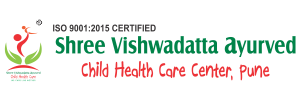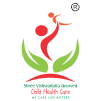Cerebral palsy
Cerebral palsy (CP) is a group of disorder of movement and posture causing activity limitation, that are attributed to non-progressive disturbances in the developing tetalor infant brain.
Cerebral palsy (CP) is most common and costly form of chronic motor disability that begins in childhood. The motor disorders are often accompanied by disturbances of sensation perception, connection, communication and behavior as well by epilepsy and secondary musculoskeletal problems. Cerebral palsy (CP) is caused by a broad group of developmental, genetic, metabolic, ischemic, infectious and other acquired etiologies that produce a common group of neurologic phenotypes. CP is generally divided into the pattern of neurologic involvement, neuropathology and etiology. Many children and adults with CP function at a high educational and vocational level, without any sign of cognitive dysfunction.
The term cerebral refers to the brain, palsy refers to the loss or impairment of motor function.
Cerebral palsy affects the motor arear of the brain outer layer called the cerebral cortex, the part of the brain that directs muscle movement, in some cases, the cerebral motor cortex has not developed normally during fetel growth. In another, the damage is a result of injury to the brain either before, during or after birth. In either case, the damage is not repairable and the disabilites that result permanent.

Causes of cerebral palsy (CP)-
Cerebral palsy (CP) is caused by abnormal development of part of the brain or by damage to part of the brain control movement. This damage can occur before, during or shortly after birth. The majority of children have congenital cerebral palsy although it may not be detected until months or year later.
The causes of cerebral palsy (CP) are–
- Brain infections such as bacterial meningitis or viral encephalitis.
- Problem with blood flow to the brain
- Head injury (intracranial haemorrhage or bleeding inside brain)
- Genetic abnormalities
- Congenital brain malformation
- Maternal infections on fever
- Damage to the white matter of the brain (periventricular leukomacia or PVL)
- Severe back of oxygen in the brain
- Severe material low blood pressure rupture of uterus, detachment of placenta
- Problems involving the umbilical cord
Early signs in Cerebral palsy (CP):
The science of cerebral palsy (CP) usually appears in the early month of life although specific diagnosis may be delayed until age two years or later. Infants with CP frequently have developmental delay in which they are slow to reach developmental milestones such as :-
– learning roll over, sit, crawl or walk.
– some infants with CP have abnormal muscle tone.
– decreased muscle tone (hypotonia)can make them seem stiff or rigid.
– Increased muscle tone (hypertonia) can make them seem stiff or rigid.
– unusual posture
– favor one side of the body when they reach, crawl or more.
Some early signs:
In a baby younger than 6 month of age
– Head lays when you pick him up while hers lying on his back
– He feels stiff and floppy
– When you pick him up, his legs get and they cross scissor
In a baby older than 6 months of age:
– does not roll over in either direction
– cannot bring hands together
– difficulty in bringing her hand to her mouth
– they reaches out with only one hand while keeping the other fisted
In baby older than 10 months of age
He crawls in a lopsided manner pushing off with one hand while dragging the opposite hand /leg
He cannot stand holding onto support
Types of cerebral palsy (CP):
The specific forms of cerebral palsy (CP) are determinate as-
- Spastic Cerebral Palsy
- Dyskinetic Cerebral Palsy
- Ataxic Cerebral Palsy
- Spastic Cerebral Palsy
It is most common type of the disorder child have stiff muscles and awkward movement.
Forms of specific cerebral palsy include-
- Specific diplegia/ diparesis involves muscle stiffness that is predominantly in the leg and less severely affect the arms and face.
- Spasticquadriplegia/ quadriparesis is the most severe form of cerebral palsy and is often associated with moderate-to-severe intellectual disability. Children will often have severe stiffness in their Limbs but a floppy neck they are rarely able to walk. Speaking and being understood are difficult.
- Dyskinetic cerebral palsy– is characterized by slow and uncontrollable writing or jerky movements of the hands, feet, arms or leg. Hyperactivity in the muscles of the face and tongue make some children grimace or drool. They find it difficult to sit straight or walk. Some children have a problem hearing, controlling their breathing.
- Ataxic cerebral palsy affect balance and depth perception. Children with ataxic cerebral palsy will often have poor coordination and wolk unsteadily with a wide based gait. They have difficulty with a quick or precise movements. Such as writing for or buttoning a shirt or a hard time controlling voluntary movements such as reaching for a book.
Symptoms appears in cerebral palsy:-
Children with cerebral palsy (CP) following symptoms including
– lack of muscle coordination when performing voluntary movement
– stiff and tight muscle and exaggerated reflexes.
– weakness in one or more arm and leg
– walking on the toes a croached gait or a scissored gait
– variations in muscle tone either to stiff or to floppy
– excessive drooling or difficulty swallowing or speaking
– shaking or random involuntary movements
– delays in reaching motor skill milestones
– difficulty with precise movements such as writing or buttoning a shirt
– intellectual disability
– abnormal physical sensation
– impaired vision
– hearing, language and speech problems
– delayed growth and development
– learning difficulties
– dental problems
– contractuves
– malnutrition, inactivity
As per Ayurveda
Ayurveda has a separate branch of clinical specialisation concerning child health care known as kaumarabhritya. In Ayurvedic Samhita there are many conditions and some causative factor linked to etiopathology for such type of disease condition that is Cerebral palsy (CP) described in many disease in different texts. Some conditions which find on overlap of symptoms of cerebral palsy (CP) include Phakka (a kind of nutritional disorders), Pangulya (locomotor disorder), mukatva (dumbness), jadatva (mental disorder), Ekangaroga (monoplegia), sarvangaroga (quadriplegia), paksaghata (hemi paralysis), paksavadha (hemiplegia) etc. Under the group of vatavyadhi (neurological disorders). However, considering the classification and the respective features of the type of CP may be started as janma bala pravritta vyadhi (congenital disorder). In some cases it may also be due to the derangement of Doshas (bodily humors), consequently, CP may also be considered as shiro marmabhighata vata vyadhi (disease due to head injury) marmaghata (injury to vital organs) is one of the causes of vata vikara (vata vyadhi) i.e. Body humor.
Ayurvedic classic have mentioned that derangement of bodily humors and injury to vital organ during formative stage, fital life, delivery and neonatal period produces symptoms like loss of activities, stammering, dumbness and weakness including mental derangement due to impairment of motor and sensory activities.
In Ayurved for this condition we formulated herb combination of all these we got a good result in cerebral palsy. Our formulation of Ayurvedic medicine or Ayurvedic treatment for cerebral palsy is very effective with herb combination, panchkarma therapy meditation, Ahar. Combination of all these we got a good result in cerebral palsy.

